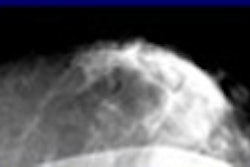FDG-PET could play a major role in determining whether relapsed lymphoma patients should progress to autologous stem cell transplantation (ASCT), according to a presentation earlier this month at the American Society of Hematology meeting in Atlanta.
"When a lymphoma patient relapses, most often centers would just use CT scans to assess the patient's response to the chemotherapy. However, we found that adding a PET scan can help guide clinicians in deciding whether or not the patient should continue on to receive transplantation. Our findings indicate that patients with a positive PET scan have much worse outcomes," said Dr. Jakub Svoboda, a third-year fellow from the University of Pennsylvania in Philadelphia.
For this retrospective analysis, Svoboda's group looked at data on 47 patients with lymphoma, the majority of whom had diffuse large B-cell (19) lymphoma or Hodgkin's disease (18). The patients underwent FDG-PET after at least two cycles of salvage chemotherapy in advance of ASCT.
Three patients were excluded because of nonconclusive FDG-PET results. The researchers then categorized the remaining 44 patients as FDG-PET negative (26) or positive (18). Both groups were evaluated for event-free survival, defined as the interval between the date of the transplant to the date of relapse after complete remission, the date of progression for patients without complete remission, or the date of death from any cause in the absence of relapse. Follow-up reports were available for 14 months.
According to the results, the investigators noted no statistically significant differences in the distribution of lymphoma subtypes between the two groups. They found that the median event-free survival rate in the FDG-PET-negative group was 18 months, with 14 patients (54%) remaining in complete remission.
However, among the patients in the FDG-PET-positive group, the median event-free survival rate was only five months, with one patient (6%) remaining in complete remission.
"Although this study has some limitations that are typical of retrospective analysis, the most important implication here is that PET scans, in addition to CT scans, can help predict the success or failure of autologous stem cell transplantation in this patient population," Svoboda said. His group called for clinical trials using FDG-PET in these patients.
By Jerry Ingram
AuntMinnie.com contributing writer
December 30, 2005
Related Reading
MRI offers in-depth, biodynamic view of cellular therapy, November 2, 2005
A new use for SPECT/CT: Tracking stem cell migration, October 7, 2005
Copyright © 2005 AuntMinnie.com



















